Battle of Vicksburg Facts for Kids
The Siege of Vicksburg was the last major military action in the Vicksburg campaign of the American Civil War. It was considered “a key to the war” by the then President of the United States, Abraham Lincoln. It was when the Union and the South were fighting for hold over Vicksburg. A total of 4800 unions and 30,000 confederates were captured during this great battle. Read on to know more about the Battle of Vicksburg facts.
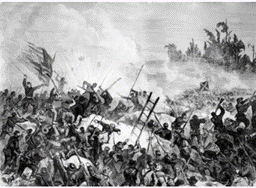
An overview about the battle
- Battle Name:
The Siege of Vicksburg was also called the Battle of Vicksburg.
- Battle Start/End Date:
The Battle of Vicksburg took place on May 18, 1863, and ended on July 4, 1863.
- Location:
Vicksburg is a strategic location on the bank of river Mississippi, Warren County.
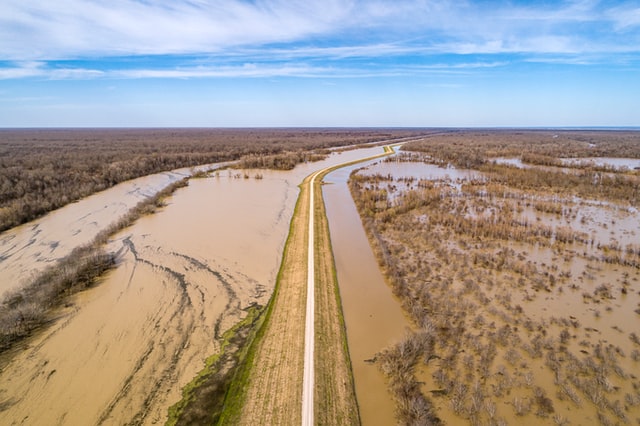
- Belligerents:
Confederate President Jefferson Davis viewed Vicksburg as a “nailhead that holds the South’s two halves together.”
- Unites involved: (ref)
- It took six months for Grant to realize that the victory for him was on the Confederate side of the river. So, Grant’s army marched 200 miles toward Pemberton’s Army and fought five battles that were not known till then in the history of America.
On May 1, 1863, Grant’s army met their counterparts at Port Gibson, later famously known as the Battle of Port Gibson. For 17 hours, 8000 confederates fought bravely against 20,000 Union army in rugged terrain. Later the confederates had to fall back due to the reinforced Union army.
- With the fast-south moving union, the confederates needed strong leadership, and it came in the form of Lt. Gen. John C. Pemberton. What followed next was very unexpected. Pemberton realized that the next goal of Grant was to burn down the bridge, so he decided to head to Vicksburg with his army in the challenging and rugged terrain.
What Grant did next is remembered as the hallmark of his military career. He cut down the railway line, which supplied the essentials and reinforcement to Vicksburg, which later came as a severe blow to Pemberton as he couldn’t communicate with his associates and higher officials who were in far-off places.
- Later Mcclernand, Sherman’s, and Mcpherson’s corps, upon the instructions of Grant, headed to strike down the south railway line. Pemberton ordered to take the train and attack Grant. These 3000 confederates fought against 10,000 men of LT Gen. James. McPherson corp, just south of Raymond, which later was known as the Battle of Raymond.
- Understanding that he safely couldn’t march towards Vicksburg, Grant instructed to cut down and torch the railway and telegraphic lines and later sent two-thirds of his army, led by Sherman and Mcpherson, towards a place called Jackson and the rest against Pemberton. Thereby hindering communication between Pemberton and his close associate at Jackson.
- On May 13, Gen. Joe Johnston arrived to take charge of the confederate at Jackson but later realized that it was too late to defend themselves and informed his higher officials to instruct him to evacuate the city right away. Later the corps of Sherman and Mcpherson fought against the defending confederates of Jackson; consequently, the confederates fled. Later the United States flag flew high in the state capital of Jackson, which was a feather in the cap for the United States.
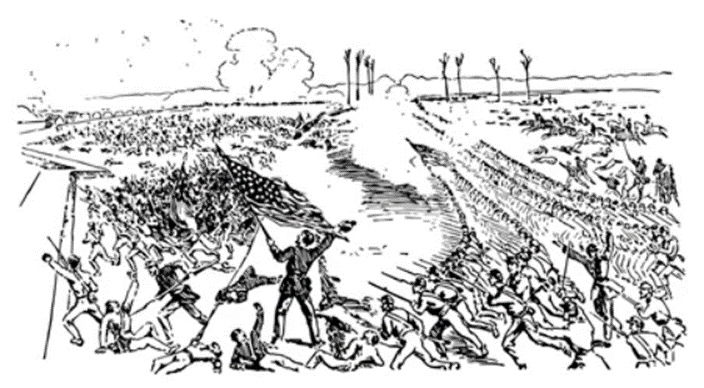
Commanders and leaders:
Grant later instructed his men to torch the railway and telegraph lines at Jackson. Learning of the latest development, Pemberton moved towards the Southeast, and his associate, Johnston, gathered reinforcements towards the northeast to attack the fast-moving Grant’s army. Pemberton hastily deployed his divisions to fight against Grant after receiving a two-day-old letter from Johnston instructing him to come to Clinton. The men of both parties met at the famous Champion hill.
Later that morning, Grant starts the war to seize Vicksburg and make it meet its eventual fate. Grant’s division had access to Baker’s Creek Bridge. So Grant chalked out a plan. Both armies fought again just a few miles east of Baker’s creek bridge. Initially, the reinforced Left line could make the left division of Grant fall back, but then, the reinforced Grant’s left division made the Pemberton’s left line take to heels, and the Pemberton army retreated towards Baker’s creek.
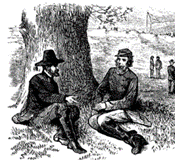
- Casualties and Loss:
The loss at Champion hill made Pemberton pay 25% of his men, a lot of cannons, and the faith of his men. So Pemberton decided to ride back to Vicksburg, the very decision which ended his career in disgrace and disaster. Pemberton’s demoralized and demotivated army followed him and fortified the city of Vicksburg with cannon and artillery. On May 19, 1863, a long and bloody battle took place between the corps of Sherman and the men guarding the graveyard road. This is remembered as the First assault on Vicksburg. On May 22nd Grant attacked the fortified city on a much wider three-mile stretch. This is known as a second assault on Vicksburg. After losing a lot of his soldiers, Grant decides to lay siege.
Result:
Desperate to win, Grant devised a plan. On 23rd June 1863, men of Grant began mining beneath the third Louisiana redan and exploded 2200 pounds of black powder. And then a fierce battle ensued. For 47 days, the citizens of Vicksburg shook with fear and despair amid war. The continuous cannon firing and weakening south wall forced the batteries of Pemberton to escape through the Mississippi River; the people of Vicksburg hid in rocks. Food and water grew scarce. Houses turned into hospitals, wagons into ambulances, and much more. Sickness and dissertation left few men on the front line.
Pemberton receives a letter that reads, “If you can’t feed us, then surrender us”. He realizes on July 2nd that he has no other choice but to surrender. Something that nobody has ever anticipated has happened. Grant and Pemberton have met to talk on Terms of surrender. Grant said with authority that Pemberton must surrender unconditionally, to which Pemberton refused. Infuriated, Grant warned of mass deaths.
Physically and emotionally exhausted, the citizens and men of Pemberton had surrendered to Grant, and the city fell into the hands of Grant. With the capture of Jackson, Clinton, and Vicksburg, the Mississippi river was then entirely in the hands of the union. Even two years later, the strategy used by Grant in the Vicksburg campaign was still used by US armed forces. Years later, the unity of the south and the union resulted in the establishment of Vicksburg national military park in 1899. Efforts were made to maintain the site so that the sacrifices made by both sides would not be forgotten.
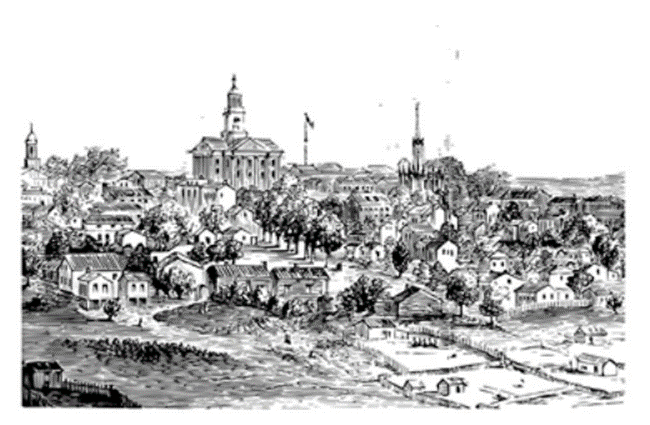
Battle of Vicksburg facts:
- Mississippi flows through the heart of America, and it is the very river that made America what it is today.
- The Battle of Vicksburg was the last major military Battle of the American Civil War.
- The Battle of Vicksburg was also known as the seizing of Vicksburg, for the city was under seizure for 47 days.
- The Battle of Vicksburg was fought between the United States, also known as the union, and the Confederate states.
- Flabbergastingly, the battle was fought for one month, two weeks, and three days.
- The United States finally won the Battle of Vicksburg, but at the cost of a lot of soldiers.
- At the beginning of the battle, the United States army outnumbered the confederate states’ army by more than a 1 to 2 ratio.
- Nearly 8000 people have laid down their lives in this battle.
- The United States though it had won, had many casualties, deaths, wounded, and lost men.
- The confederates had a greater number of casualties, deaths, wounded men, and missing men.
- Nearly 90% of confederates ended up as prisoners of war.
- The confederates lost as many as 172 cannons to the United States.
- After the victory over Confederates at Vicksburg, then-President Abraham Lincoln said, “The Father of Waters again goes unvexed to the sea.”
- The defeat of the Confederate at Vicksburg gained the US the last stronghold of the south and ultimate control over the River Mississippi.
- Defeat Pemberton, take hold of Vicksburg, control River Mississippi, and divide confederates – all this was under the plan of the United States by the name “Anaconda plan.”
- Even today, the strategies implemented by Grant in the Battle of Vicksburg are taken as reference by Us armed forces in devising war plans.
- This battle shaped the history of America.
- This battle drove the people of the south into an intense scarcity of food and water.
- Not even the legendary Johnston could save the confederates from defeat.
- The strategic torching of the railway and telegraphic lines by men of Grant have, in one way, led to their victory over Pemberton.
Conclusion
Vicksburg was known as the bastion of the confederate. The Mississippi River played a crucial role in supplying and communicating vital goods through the south. River Mississippi is one that made a nation and also brought it to the brink of disaster. The Battle of Gettysburg is considered the most important civil war, which played a major role in the success of the Vicksburg battle.
Visit Cool Kid Facts to gain more knowledge on Battle of Vicksburg facts.
